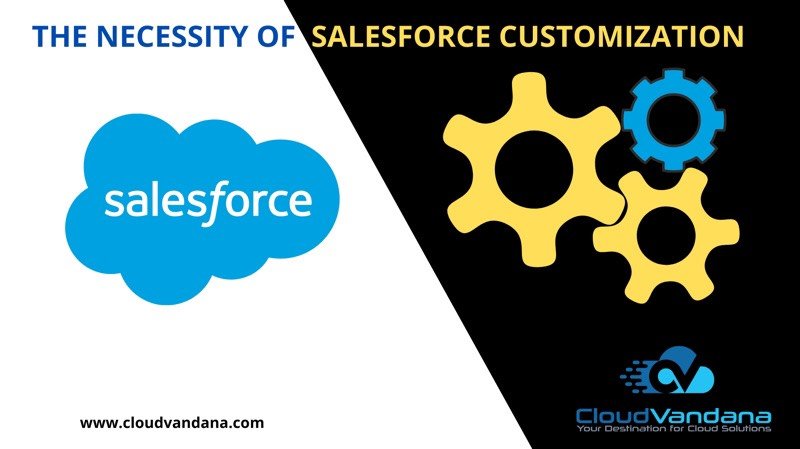Salesforce is considered the #1 customer relationship management (CRM) solution across the world. So most organizations are using Salesforce CRM for a seamless business process. But if users notice after a certain period of time that some fields are missing, a few processes are not automated enough, etc, then it causes disruption to the work process. This might sound familiar to most of the Salesforce users and admins. These signs indicate resorting to Salesforce configuration, customization, or sometimes the combination of two.
Salesforce Customization
Salesforce customization fulfills the goal of adapting the platform in a specific way to suit the business processes. It refers to custom development and coding to add robust features to the CRM platform. The functionalities and work processes are different in different organizations. So Salesforce customization is very much needed as there is no such formula as one size fits all.
Many things like excessive manual data input, missing workflows for complex approval processes, lacking email automation leads to decreased sales, customer service, etc. So these affect the revenue of the companies. So companies are now opting for Salesforce customization that will support the specific bits of their business process in a better way.
Tools Used For Customization
There are various tools for Salesforce customization as per business needs. Following are some of the customization tools.
Visualforce- Visualforce is a programming language used for creating UI pages and components.
Apex- Apex is also a programming language similar to Java and C# used for working with user actions and objects.
SOQL (Salesforce Object Query Language)- It is a programming language used for querying data in Salesforce.
Lightning Components- Lightning Components is a Javascript framework used for building reusable components for Salesforce.
Salesforce Connect- It is an OData protocol tool that authorizes Salesforce users to interact with third-party system data.
Salesforce Customization
As Salesforce is a highly customizable platform, admins can alter any elements in it virtually. Customizable elements can be divided into three groups, UI(user interface), functionality, and integrations.
Admins can change the look and feel of the original Salesforce UI. They can change the page layouts as per requirements. Admins can change the Salesforce functionality as per the organizational work process. Functionality includes objects, fields, reports, dashboards, tabs, templates, workflow, etc. Modifying all these components is a very important part of Salesforce customization.
Salesforce provides huge features and apps prebuilt in the ecosystem. Einstein AI, Chatter, Virtual Assistant, etc are a few examples of that. But developers can change or even develop new custom features and apps to fulfill the objectives.
Developers can build integrations between Salesforce and any third-party system. For example, users can include a ready-made connector like CV Files for any added features.
Looking for a Salesforce Partner for a seamless Salesforce integration and maintenance? Visit www.cloudvandana.com and book a free consultation call for a better understanding.










